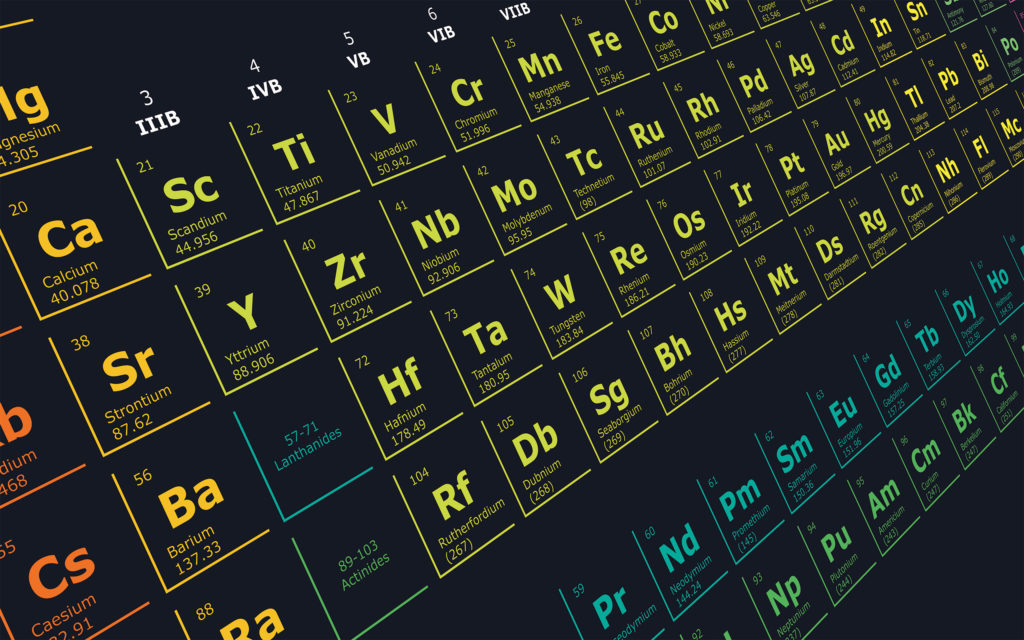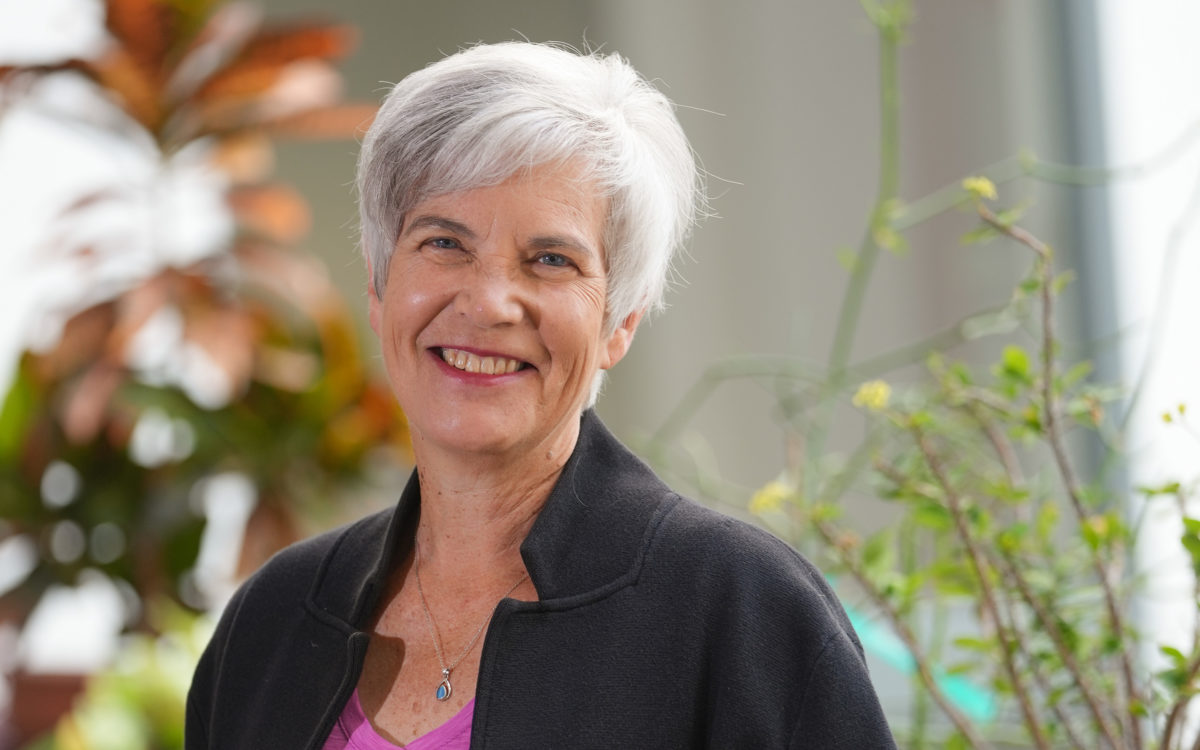Research, Teaching, and Research on Teaching in Inorganic Chemistry
Dr. Joanne Stewart, The Elmer E. Hartgerink Professor of Chemistry
Just as the COVID-19 pandemic was catching the rest of the world flat-footed, Dr. Joanne Stewart, the Elmer E. Hartgerink Professor of Chemistry, was vocationally a step ahead.
As a prominent member of a “virtual community of practice” — the Interactive Online Network of Inorganic Chemists (IONiC) — and as a contributor to its Discord website, she was already immersed in more than a decade of discussions and studies about the most effective teaching strategies. So it took only a graceful sidestep to continue honing and sharing distance education for IONiC’s national community of more than 1,000 teachers of inorganic chemistry. Stewart’s 35 years at Hope span decades of research at the cutting edge of chemistry pedagogy — she knows better than most that effective learning is particularly hard work. Ambitious projects are her specialty.
“Just like we go into science with this existing body of scientific knowledge, so students walk in with their own prior knowledge. They get exposed to new ideas in some way, and they have to make sense of those new ideas. That’s hard work: You’ve got to try stuff out, you’ve got to fail, you’ve got to refine, you’ve got to try again.”
Stewart cites the 30-year-old National Science Foundation-funded Systemic Change Initiative as the most influential project of her early career. “They wanted to change how chemistry was taught, across the whole country,” she says. “It was a very ambitious project.” It needed to be: Research had uncovered that around half of the students entering college to study science switched majors within a year or two. One goal of the initiative was to reduce the exodus of talented, curious students from a field they initially loved. That goal resonated with Stewart, who entered science under the tutelage of gifted, engaging mentors and knows both the joys and challenges of sticking it out to become a full-fledged scientist.

“Essentially all science students run into a problem, a wall, a challenge, at some point in time. Some students are able to navigate that challenge and some students aren’t,” Stewart says. “The people who set up those walls and challenges are the instructors, and that’s what’s inspired me throughout my career: to support faculty, and help faculty become better teachers.” It’s both challenging and rewarding.
“We know that learning is hard work,” Stewart says. “We don’t always use the best learning approaches that are available to us — we tend to use the things that are easier. Instead, the stuff that really helps us learn is the stuff that’s challenging. It’s like a physical workout. If I want to learn how to run a marathon, walking to the mailbox is not going to train for that.” Listening to an entertaining lecture is the mental equivalent of a leisurely stroll. It isn’t enough to turn students into scientists.
“If I can give a really articulate, concise, clear, fun, entertaining lecture, they’ll like that. But I also know they won’t learn very much,” Stewart explains. “Research is very clear that through active engagement with the material, small group work, etc., they will learn a lot more. But, if I do small group, active learning, etc., that’s harder, so they’re going to leave the classroom having struggled, and feeling like they don’t know as much — even though they know more.” This is particularly prevalent in chemistry. Consequently, one of Stewart’s key research questions is What makes learning chemistry hard? She’s explored this with large national surveys, uncovering challenges faced by both instructors and students; her publications have influenced the development of curricula and standardized tests nationwide.
“We’re starting to understand what things are particularly challenging for students… If you have a different conception of how things work, we know — through a lot of research — that displacing a deeply held conviction of how the world works takes a long, long, long time. It doesn’t happen in one semester.”
“We’re starting to understand what things are particularly challenging for students,” she says. “Where do they get lost along the way? How can we work with their alternative conceptions and help shift them over to the way a chemist would conceptualize it? If you have a different conception of how things work, we know — through a lot of research — that displacing a deeply held conviction of how the world works takes a long, long, long time. It doesn’t happen in one semester.”
Most change demands more than time, in Stewart’s experience. Her research findings suggest that communities — and accompanying tight bonds — are essential for the development and spread of best practices in chemistry instruction. “If you’re spreading a virus, then the epidemiological model works great, because a virus spreads through loose ties: All you have to do is bump into somebody. But when it involves behavioral change, or more difficult change, then things don’t spread that way. They spread through these tight ties,” she says. These ties bond IONiC’s members, and Stewart’s next project is designed to link additional groups. “If you want a large social movement, you’ve got to find a way to knit communities together,” she says. Her goal is to link IONiC with other communities of practice in sub-disciplines like organic chemistry, physical chemistry and biochemistry.
Stewart is familiar with linking disparate concepts. Inorganic chemistry, her focal area, “is incredibly broad: It’s the study of the entire periodic table,” she says. “You get a whole year to learn organic chemistry — the chemistry of carbon —and then you get one semester to learn the chemistry of the other 117 elements.” Curricula across the country are far from uniform — though it’s a safe bet they will involve imagination and models.
“It’s a pretty abstract topic,” Stewart says. “You can’t see it. You have to have a vivid imagination.” Concepts are not always intuitive.
“There are different models that we can use to explain the same phenomenon, and each model has its own strength and weakness,” says Stewart. “I love that, and for me, it’s fascinating.” For her students, it can be less so. “Some students are attracted to science because they have this misconception that it’s black and white, that there’s a right answer and a wrong answer. And they get to inorganic, and the answer is ‘it depends.’ That can be very frustrating to students.”
Inorganic chemistry, in a way, models science. “There’s a very important social component to constructing new science knowledge. I believe that learning works the same way,” Stewart explains. “Just like we go into science with this existing body of scientific knowledge, so students walk in with their own prior knowledge. They get exposed to new ideas in some way, and they have to make sense of those new ideas. That’s hard work: You’ve got to try stuff out, you’ve got to fail, you’ve got to refine, you’ve got to try again.” Hard work, after all, is what it takes to learn.

